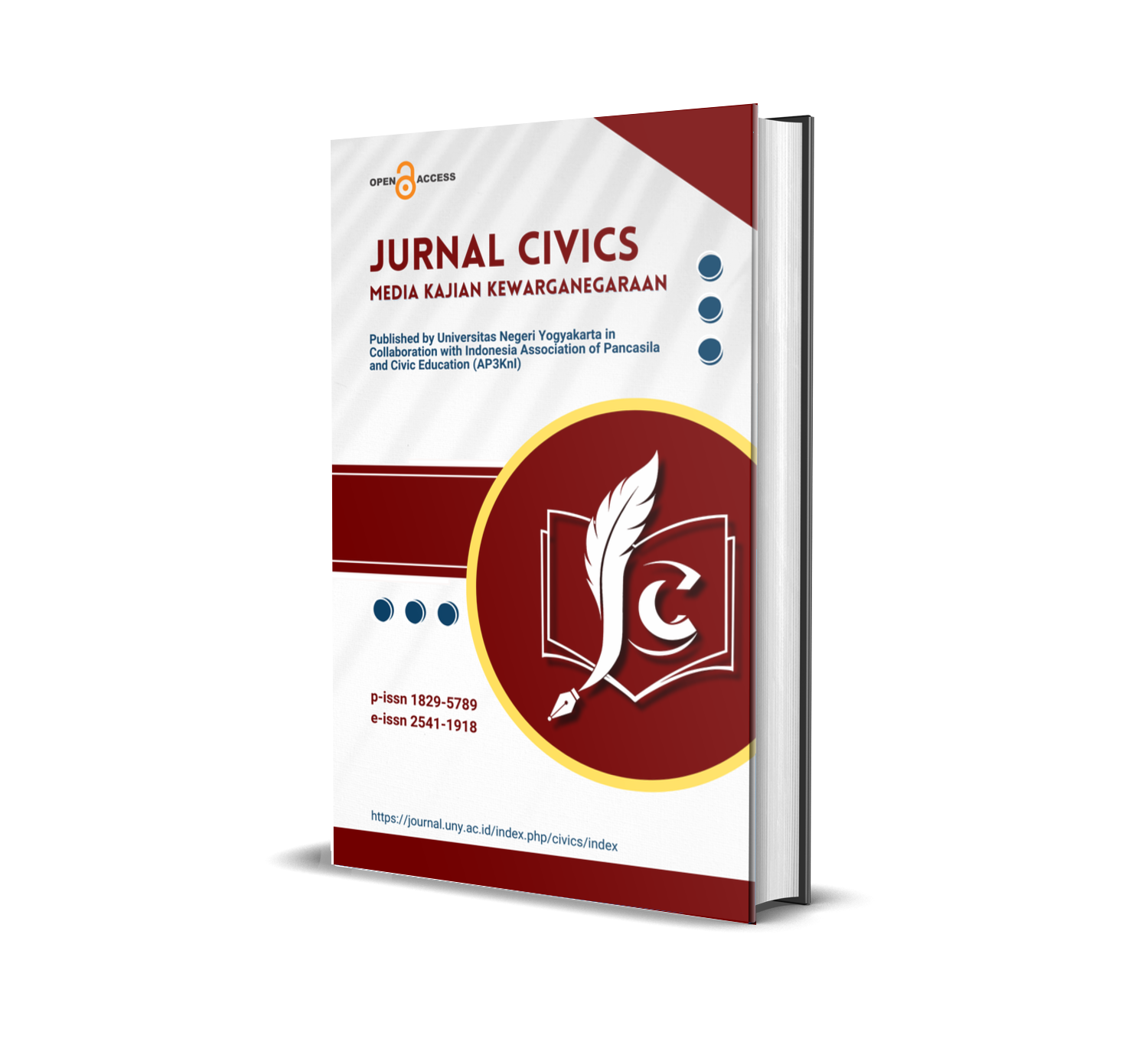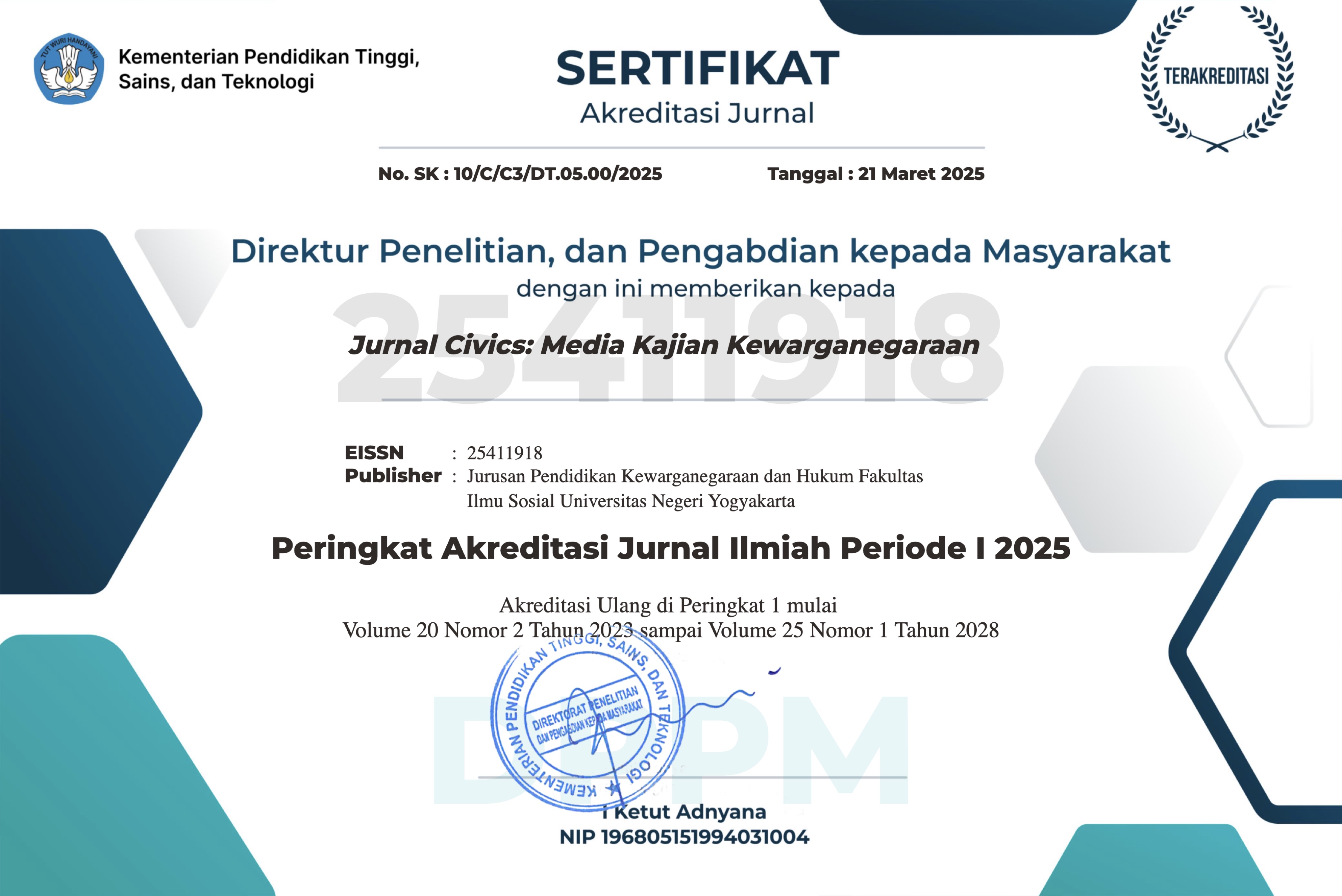Dinamika pelaksanaan Kurikulum 2013 pada tingkat sekolah menengah pertama di Kota Semarang
DOI:
https://doi.org/10.21831/civics.v13i2.12724Keywords:
curriculum 13, PPKn, SMPAbstract
The purpose of this study was to examine the implementation of the curriculum PPKn 2013 for Junior High School in targeted schools. In details, this research was aimed at (1) describing the influence of curricula across time; (2) describing the dynamics of implementation and its impact on the teachers' understanding; (3) describing the level of teachers' understanding on planning, implementing and evaluating based on curriculum 2013 guidance; and (4) stating a recommendation for curriculum policy makers in future. It was descriptive research. The methods for collecting data were questionnaire, interview, and observation. The results indicated that the teacher understood how to implement the curriculum, especially in teaching PPKn. PPKn teacher was able to plan, conduct, and evaluate of teaching PPKn authentically.
References
Baldwin, A. L. (1967). Theories of child development. Palupi, D. T. (2016). Cara mudah memahami kurikulum. Surabaya: Jaring Pena. Peraturan Menteri Pendidikan dan Kebudayaan Nomor 103 Tahun 2014 tentang Pembelajaran Pada Pendidikan Dasar Dan Pendidikan Menengah Sudjana, N., & Ibrahim, R. (2001). Penelitian dan penilaian pendidikan. Bandung: Sinar Baru.
Downloads
Published
How to Cite
Issue
Section
Citation Check
License
The authors agree to transfer the transfer copyright of the article to The Jurnal Civics: Media Kajian Kewarganegaraan effective if and when the paper is accepted for publication.
Authors and other parties are bound to the Creative Commons Attribution-NonCommercial-ShareAlike 4.0 International License for the published articles, legal formal aspect of journal publication accessibility refers to Creative Commons Attribution-NonCommercial-ShareAlike 4.0 International License (CC BY-NC-SA).










